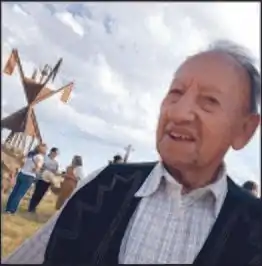Chaná language
The Chaná language[3] (autoglossonym: Lanték, that means "speak" or "language"; and this, from lan, "tongue" and tek, a communicative suffix)[4] is one of the Charruan languages spoken by the Chaná people in what is now Argentina and Uruguay along the Uruguay and Paraná Rivers on the margins of the Río de la Plata.[5] It was spoken by the Chaná from pre-Columbian times in the vast region that today is between Entre Ríos Province, Argentina and Uruguay, and the Uruguay and Paraná Guazú Rivers. According to recent oral memory narratives,[6] in ancient times, they inhabited territories around the current Brazilian margin of the Uruguay River. They later migrated from this location along the Uruguay and Paraná Rivers from the outfall of the Iguazú River and from the Paraguay River to the current location of Asunción.[7]
| Chaná | |
|---|---|
| Lanték Yañá | |
| Native to | Uruguay, Argentina. |
| Region | Around Uruguay River and Paraná River and Río de la Plata |
| Ethnicity | Chaná people |
Native speakers | 1 recognized by UNESCO.[1] |
| Revival | 2005; several students in both Uruguay and Argentina |
| Dialects | Yañá-yañá, Yañá-ntimpúc, and (probably) Nbeuá |
| Language codes | |
| ISO 639-3 | None (mis) |
qsi | |
| Glottolog | chan1296 |
| Linguasphere | 85-DCA-d(a)[2] |
UNESCO recognizes it as a living language but also as "extremely endangered" because it has only one native speaker.[8] The Chamber of Deputies of the Entre Ríos Province recently recognized the necessity for the government to recognize and protect the language.[9]
Blas Wilfredo Omar Jaime

Blas Wilfredo Omar Jaime (Agó Acoé Inó, "dog without owner-" in the Chaná language, Nogoyá, Entre Rios, February 2, 1934), an Argentine, is the only native speaker of Chaná. He is now referred to as Tató Oyendén, or custodian of the ancestral memory.
The language, which Blas learned from his ancestors, was considered extinct before he was interviewed by the linguist José Pedro Viegas Barros.[10][11][12][13] The two men together authored the book "La Lengua Chaná. Patrimonio Cultural de Entre Ríos" published by the official press organ of the provincial government of Entre Ríos. The organ published the book in recognition of "Lanték" (the Chaná language) to support the cultural patrimony of the province.[14]
Dictionary by Viegas-Jaime
"Lanték" has been recognized as a part of the "Cultural Heritage of the Entre Ríos Province." The first dictionary of the language was published by the Provincial Publishing House of Entre Ríos.[15] The publication contained a dictionary compiled via Don Blas Wilfredo Omar Jaime and an encyclopedic study of Chaná culture. There were also several chapters on the linguistics of Chaná by Viegas Barros.[16]
The Chaná cultural study encompassed the fourth and last section of the book. A great deal of Chaná ethnoliterature was obtained during elicitation sessions with Viegas Barros during the seven years prior to the publication of the volume. It also has an audio CD which includes recordings that of Don Blas speaking his Lanték.
Phonology
The following are the phonemes of the Chaná language:[17][18]
| Bilabial | Alveolar | Palatal | Velar | Glottal | |
|---|---|---|---|---|---|
| Nasal | m | n | ɲ | ||
| Stop | p b | t d | tʃ | k g | ʔ |
| Fricative | s | ʃ ʒ | (x) | h | |
| Glide | w | j | |||
| Lateral | l | ||||
| Trill | r | ||||
| Flap | ɾ |
| Front | Central | Back | |
|---|---|---|---|
| Close | i | u | |
| Mid | e | o | |
| Open | a |
References
- "Chaná". UNESCO Atlas of the World's Languages in Danger. UNESCO. Retrieved 6 December 2018.
- "Linguasphere Index C" (PDF). www.linguasphere.info. Retrieved 2018-12-06.
- "Chaná - Biblioteca Digital Curt Nimuendajú". www.etnolinguistica.org. Retrieved 2018-12-06.
- JAIME, Blas Wilfredo Omar; VIEGAS BARROS, José Pedro (2013). La lengua chaná, patrimonio cultural de Entre Ríos. (in Spanish and Chaná). Paraná: Dirección Editorial de Entre Ríos. p. 145. ISBN 978-950-686-039-4.
- Loukotka, Čestmír (1968). "Classification of South American Indian Languages". UCLA Latin American Center. Los Ángeles.
- JAIME, Blas Wilfredo Omar (4 August 2017). "Conservar la cultura, Blas Jaime". inicio (in Spanish). Retrieved 23 September 2018.
- "Blas el chaná". Nación Charrua Artiguista y Originaria (in European Spanish). 30 January 2013. Retrieved 23 September 2018.
- "UNESCO Atlas of the World's Languages in danger". www.unesco.org. Retrieved 2018-12-06.
- Diario de Sesiones de la Cámara de Diputados de la Provincia de Entre Ríos, sesión del 03 de julio de 2018.
- Página12. "La misión del último hablante chaná | Cómo se recuperó una lengua originaria de América gracias al encuentro entre un jubilado y un lingüista". PAGINA12.com.ar (in Spanish). Retrieved 2019-01-02.
- "Un chaná que habla su idioma" (in Spanish). 2005-03-26.
{{cite journal}}: Cite journal requires|journal=(help) - "El último chaná busca recuperar su historia" (in Spanish).
{{cite journal}}: Cite journal requires|journal=(help) - Da Rosa, Juan Justino (2013). "Historiografía lingüística del Río de la Plata: las lenguas indígenas de la Banda Oriental". Boletín de filología (in Spanish). 48 (2): 131–171. doi:10.4067/S0718-93032013000200007. ISSN 0718-9303.
- "El diccionario de chaná ya es patrimonio de los entrerrianos". Radio La Voz. Radio La Voz.
- "Museo Antonio Serrano". museoserrano.blogspot.com (in Spanish). Retrieved 2018-12-06.
- "J. Pedro Viegas Barros | Universidad de Buenos Aires - Academia.edu". uba.academia.edu. Retrieved 2018-12-06.
- Jaime & Viegas Barros 2013, pp. 31–33
- Barros, J. Pedro Viegas (2015). Una posible diferenciación de hablas feminina y masculina en chaná.
Bibliography
- Jaime, Blas Wilfredo Omar; Viegas Barros, José Pedro (2013). La lengua chaná, patrimonio cultural de Entre Ríos. (in Spanish and Chaná). Paraná: Editorial de Entre Ríos. ISBN 978-950-686-039-4.
External links
- La guarda memoria (in Spanish), The Memory Keeper (English translation of audio transcript): an episode on the Chaná language featured on the podcast Radio Ambulante.